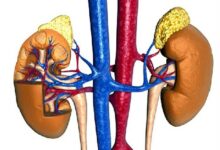Turning 50 doesn’t automatically mean your nails are doomed to become brittle and weak — and being 20 doesn’t guarantee long, strong nails. Just like your hair, the health of your nails can vary. Some 90-year-old women have thick, glossy manes of hair, while some teenagers don’t. Same goes for nails. The biological changes that occur as you age can impact your nails in terms of their thickness, shape, and color. Nail problems like brittleness and peeling are often due to decreases in nail lipids (cholesterol is a major lipid in nails) and circulation. Blood flow to our hands and feet can decrease as we age, and since our nails get their oxygen and nutrients from our bloodstream, that can take a toll on their health. In your middle age, you may develop nail texture problems, such as nail pitting or ridging, which are vertical lines that run the length of the nail, also known as onychorrhexis. Ridges are like wrinkles on your nail. They occur when parts of the nail plate thin out and begin to atrophy. You may also notice nail thickening. This is especially common on toenails due to repeated friction from shoes, she says. If you were to look at an aging nail under a microscope, you’d see that the nail cells are lifting, separating, and pulling apart. This is why nails peel, crack, and why polish doesn’t always go on smoothly and chips more easily. That explains why growing — and keeping — long, strong nails becomes a constant battle. Our nails also grow more slowly as we age. In fact, studies have shown a statistically significant difference in nail growth rates before and after the age of 40. Unfortunately, this slow-down also makes them more brittle and susceptible to yellowing. As nails take longer to grow out, they’re exposed to more environmental factors for a longer period of time, which over time, can affect their color, appearance, and strength. While age-related nail changes are common and often harmless, they can also be a sign of an underlying medical condition or health problem. So it’s important to check in with your doctor if you notice any nail pitting, ridging, lines, or changes in shape. These could be a sign of iron deficiency, kidney disease, or a nutritional deficiency. The takeaway: Your nails need a little extra TLC as you age, so be prepared to up your at-home maintenance — and see a pro if problems persist.
Click to rate this post!
[Total: 0 Average: 0]



